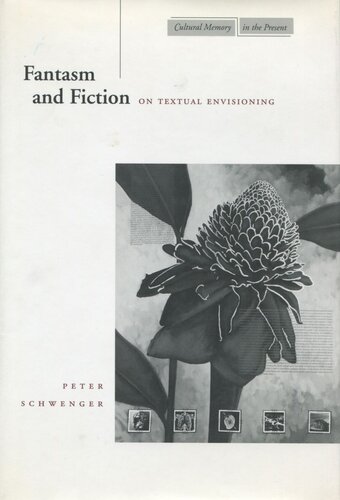

Most ebook files are in PDF format, so you can easily read them using various software such as Foxit Reader or directly on the Google Chrome browser.
Some ebook files are released by publishers in other formats such as .awz, .mobi, .epub, .fb2, etc. You may need to install specific software to read these formats on mobile/PC, such as Calibre.
Please read the tutorial at this link: https://ebookbell.com/faq
We offer FREE conversion to the popular formats you request; however, this may take some time. Therefore, right after payment, please email us, and we will try to provide the service as quickly as possible.
For some exceptional file formats or broken links (if any), please refrain from opening any disputes. Instead, email us first, and we will try to assist within a maximum of 6 hours.
EbookBell Team

5.0
58 reviewsMental image, dream, fantasy, hallucination—all these are comprised in the psychoanalytic concept of the fantasm. Perhaps only such a multifarious concept is adequate to the range of visual elements involved in the experience of reading fiction, or of writing it. Soon after the birth of the novel, doctors expressed concern that readers might be possessed by what they were reading, haunted by textual fantasms. Contemporary writers like John Gardner, Maurice Blanchot, and John Banville figure this possession as a kind of textual dreaming: fiction, like dream, draws from a fantasmal unconscious. For the reader's images to become conscious, however, they must be cued by a material text through framing strategies and evocative gaps. This book analyzes the complex relationship between the fantasmal experience and the material text, reading a wide range of works—such as Calvino's If on a Winter's Night a Traveller, Coleridge's "Kubla Khan," Sorrentino's Mulligan Stew, and Rimbaud's "The Vowels"—that treat explicitly what is implicit in reading. Although the specific images of individual readers cannot be predicted, one can speculate on the modes of these images: are they focused or fogged, schematic or emotive, fleeting or enduring? These are questions not only for theorists but for artists who make textual visualization visible. Drawing on artists' books, marginal drawings by authors, and films such as Prospero's Books, Fantasm and Fiction illuminates the process of textual visualization. The author develops, in addition, "A Politics of Visualization" through analyses of the photographs of David Wojnarowicz, Derek Jarman's film Blue, and Nicole Brossard's novel Picture Theory. In this richly suggestive study, the fantasm emerges as a crucial aspect not only of reading but of any kind of envisioning.